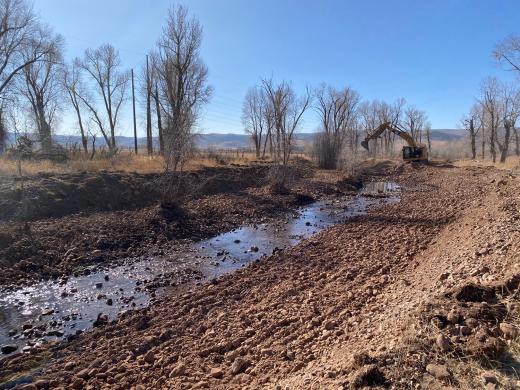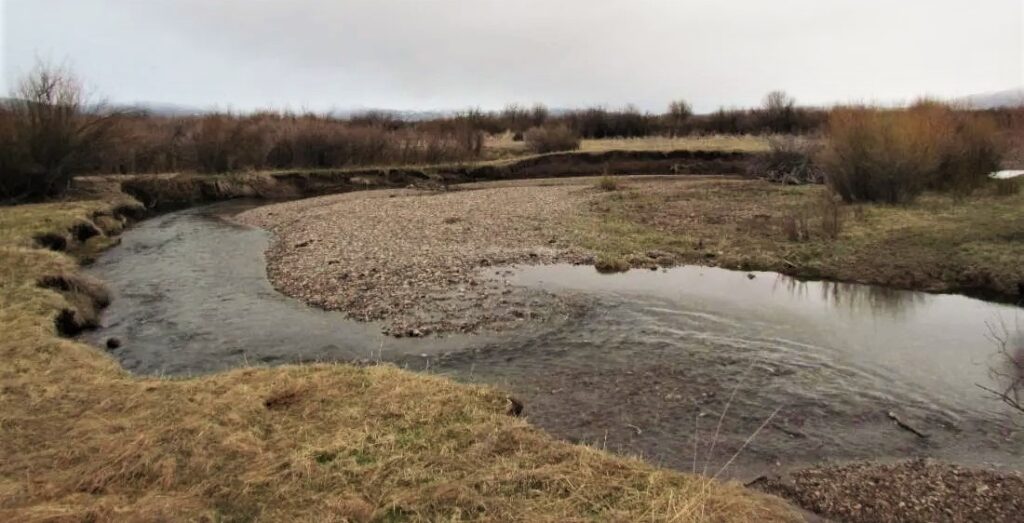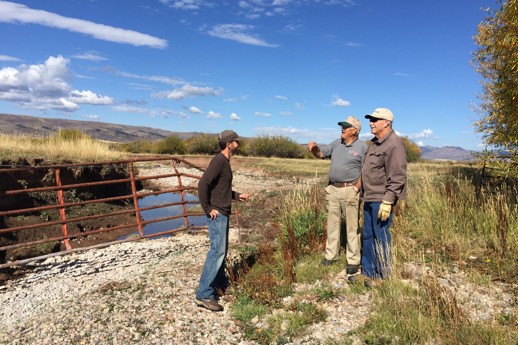
Lower Swift Creek suffered from extreme bank instability and erosion due to historic willow removal, water withdrawal, and upstream channel manipulations. A partnership of Trout Unlimited (TU), Star Valley Conservation District (SVCD), USDA-Natural Resources Conservation Service (NRCS), Wyoming Game and Fish Department (WGFD), and U.S. Fish and Wildlife Service Partners for Fish and Wildlife Program worked to address these issues. The project sought to protect and improve spawning cutthroat trout habitat in lower Swift Creek, reduce sediment contributions to the Salt River, and reduce landowner flood risk and maintenance requirements.


Project partners worked with local landowners in lower Swift Creek, including Lincoln County, on a plan to address these erosion and instability issues, which have resulted in loss of pasture, flooding, and difficulty maintaining agricultural activities. The project design, which is based on natural channel design techniques by a stream restoration engineer, stabilized the channel in-place in the upstream, seasonally-dry reach; realigned the channel through existing riparian vegetation (cottonwoods and willows) where possible; created a new, non-incised channel in the downstream reach; and fenced sensitive riparian areas. Instream structures included bioengineered bank treatments such as toewood, rock toe, and soil lifts, grade control structures such as rock weirs, and riffle and pool sequencing designed to meet the hydrologic conditions of the stream.
Additional Resources:

